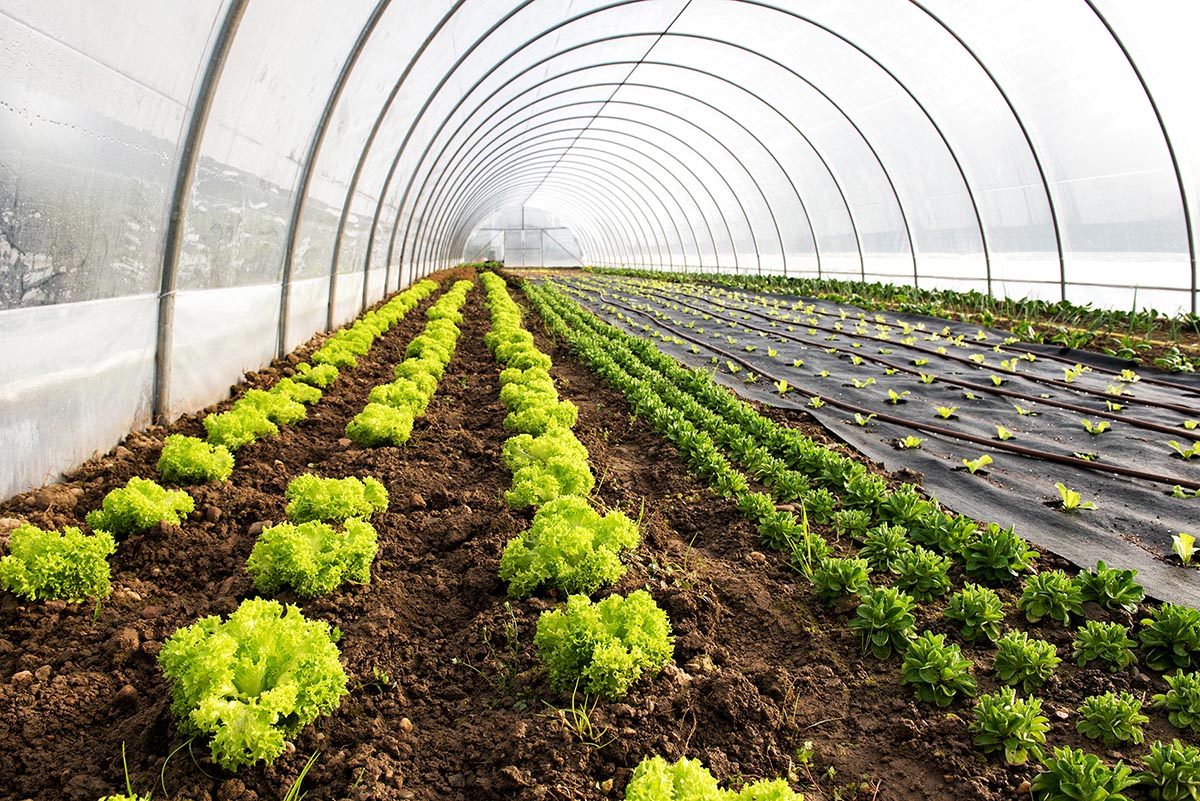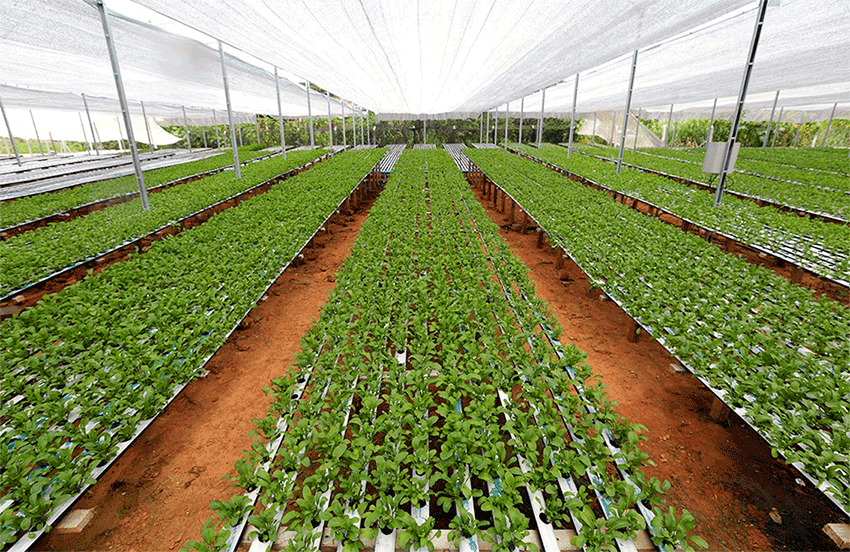
How to control temperature in greenhouses

Cultivating using greenhouses is an activity that has been developed for decades thanks to its countless benefits, not only for the land itself but also for the crops, as they contribute to improving the quality of the products, allowing producers to take full advantage of environmental factors to obtain food that’s consistent in quality and yield as well as being available almost all year round.
While cultivating crops using these closed protective structures is a great alternative, temperature control in greenhouses requires a lot of attention so that the heat and humidity produced inside the structure don’t end up being detrimental, compromising the integrity of the crop.
One of the reasons why many agricultural producers worldwide prefer to use greenhouses is because this method gives them the ability to control the environment of the crops such as berries crops by creating a sort of “artificial” microclimate that responds to the specific requirements of each region. In this way, the adverse climate conditions can be eluded at convenience to minimize the impact of strong winds, rain, pests and sudden temperature changes for example.
Another aspect that makes greenhouses popular is the short-term and long-term yield of crops because, when compared to outdoor crops, crops in greenhouses allow to:
- Create environments with the ideal level of humidity, where temperatures vary gradually and in a controlled manner.
- Adjust the amount of air circulating within the structure to the requirements of each crop.
- Use a minimum amount of pesticides.
- Minimize incidents with pests.
Good temperature control in greenhouses is possible as long as the necessary measures are taken to guarantee that crops thrive in an ideal environment.
Controlling moisture levels must be one of the priorities of agricultural producers since it’s one of the crucial factors to create an ideal microclimate within greenhouses. When there are extremely high or low temperatures within the structure the environment becomes very humid, which generates stress on the plants, making them more prone to pests, fungi, and mould. Therefore, fostering a balanced environment is essential for crops to improve their yield and absorb more nutrients through increased perspiration rate.
In a more harmonious greenhouse environment, plants can be directed towards a specific growth cycle, obtaining products that are larger, tastier, with better texture and colour, while reducing the harvest period in comparison to outdoor crops.
How to reach the ideal temperature in greenhouses?
Today, farmers face certain challenges to achieve the ideal temperature in greenhouses that will help them operate properly:
- Temperature and humidity in balance. It seems simple but maintaining uniform temperature and humidity levels within a greenhouse can be challenging. To achieve this, it is essential to guarantee that the temperature is evenly distributed within the structure to avoid the development of a microclimate with unwanted characteristics that could become an obstacle to obtain a good-quality and successful crop.
- Perspiration levels. Once moisture and temperature are balanced within the greenhouse, agricultural producers must control the perspiration rate of plants. When moisture is maintained at an optimal level, there’s a higher probability of increasing moisture evaporation levels in the leaves to make the environment more favourable.
- Promote an environment with less condensation. This is achieved by keeping moisture levels regulated, as humidity increases so do the condensation levels in plants and fruits, even on the walls of the greenhouse, which will inevitably serve as the perfect trigger for the onset of diseases and mould that will negatively affect the integrity of the crops.
- External factors. It is essential that farmers follow-up on what happens inside as well as outside the growing environment, such as unexpected temperature changes, air inlet and outlet, increased rainfall, increased incidence of sunlight, and the arrival of insects and pests from other regions, among other factors that may disturb the balance of a stable greenhouse environment.
- Proper ventilation. This is essential for temperature control in greenhouses, so the air is renewed accordingly, and the atmosphere for the plants remains stable as the natural supply of carbon and oxygen within the structure takes place. In protected crops, constant temperature and humidity levels are achieved, which optimize and elevate the photosynthesis process, while carbon metabolism becomes more effective.
With proper ventilation the entry of carbon dioxide (CO2) is achieved so it can incorporate into the greenhouse environment, allowing plants that have been under the effects of herbicides, root diseases or other aggressive treatments to increase their capacity to recover.
Ventilation also increases the incorporation of oxygen into the water contained in croplands, helping plant roots to develop more effective respiratory processes that prevent root asphyxiation and the subsequent death of plant tissue.
Ventilating greenhouses reinforces the treatments against Phytophtora infestans, Botrytis, Sclerotinia and most fungi and bacteria present in the air. Better control of the ventilation in greenhouses can be done using curtains, modifying planting frames, trimming specific areas of cultivation, or even using fans.
- Controlled irrigation. It is necessary to prevent flooding or soil saturation that compromises crop integrity. It is worth mentioning that the air renewal process in greenhouses is slow, which explains why the irrigation time should not be exceeded, otherwise humidity levels will increase negatively.
This is especially true during the winter season when temperatures drop considerably, causing moisture saturation inside the greenhouse and greater condensation of the environment’s water vapour collected in liquid form on the leaf surface.
As long as the moisture level is not under control, the risk of the onset of microbes and fungal diseases increases. Controlled irrigation moistens the environment of the greenhouse and allows to release the air of the soil, produced by the roots of the plants, which feeds the process of photosynthesis.
- Incident solar radiation is another challenge for temperature control in greenhouses because working with these structures implies the need to regulate the levels of solar radiation that reaches the plants since that radiation regulates plant metabolism in crops thanks to its influence on stomal activity, total photosynthesis rate and hormonal secretion.
When the sun’s radiation is excessive it causes internal and external burns to the plant’s tissues as a result of oxidation. With a massive photosynthesis rate, chlorophyll molecules become overexcited, causing what is known as sunstroke that makes flowers fall out and fruit burn. When radiation is low, there is a build-up of auxins that induces the elongation of the plant and the creation of longer internodes.
During cold seasons, solar radiation contributes to increase soil temperature and improve root breathing functions, while evaporating dissolved water molecules in the greenhouse environment and minimizing moisture. On the contrary, during hot seasons it is advisable to shade the crops to increase moisture levels and optimize the values of stomal conductance that help increase net photosynthesis rate and improve the carbon cycle throughout the plants.
The plasticulture used in greenhouses has many benefits and one of the advantages of using plastic films in these structures, especially those with photoselective properties, is that you can have better control of the environmental and climatic factors that affect the crops.
There are crops such mushrooms that, unlike others, require a lower incidence of sunlight and greater freshness to be able to thrive, so it is necessary to be more careful to prevent solar radiation from having an adverse effect that could end up compromising the integrity of the crop.
On the contrary, grape crops require different treatment, since they need a higher incidence of sunlight to guarantee rapid growth, a more attractive appearance and a sweeter taste.
Several methods can be implemented for proper temperature control in greenhouses, such as the use of fans and vents, wet walls to cool the environment in areas with excessive heat, shade cloths, misting and radiant heating. It will all depend on the specific requirements of the region and the type of crop you want to sow.
However, many agricultural producers agree that greenhouses consume a lot of energy to function properly, which is why there is a current trend that seeks to reduce this energy consumption by innovating and proposing new alternatives that will allow future cost reductions. To learn more about this topic, we recommend you read our article on how to reduce energy costs in greenhouses in Canada.
Success stories with the use of greenhouses
Juan Antonio García, Product Manager of the Greenhouse Cover Division in the Armando Álvarez Group, states that thanks to the use of plastic covers made from polythene in greenhouses, successful crops have been achieved in several parts of the world, more specifically in Chile and Peru, where cherry and grape crops have managed to thrive optimally, increasing their production to meet the regional demand and expand to other regions of the globe.
For more information about the topic, we recommend watching the webinar presented by Garcia, where you will find important data about how plastic films have played a decisive role in the success of these crops through greenhouses.





![[eBook] Sustainability and water management](https://agriplasticscommunity.com/wp-content/uploads/8_550x310_ENG-440x264.png)
![[eBook Trends in Agriculture Plastics] Increasing use of biodegradable mulch](https://agriplasticscommunity.com/wp-content/uploads/550 × 310_2_ENG-440x264.png)
![[eBook Trends in Agriculture Plastics] Reducing the plastic used in the manufacture of agricultural films](https://agriplasticscommunity.com/wp-content/uploads/550 × 310_1_ENG-150x150.png)
















![[eBook Trends in Agriculture Plastics] Cultivation of fruit trees under cover](https://agriplasticscommunity.com/wp-content/uploads/4_550x310_ENG-440x264.png)





